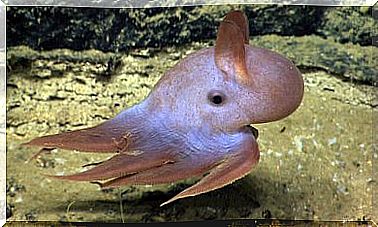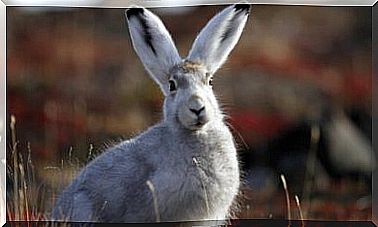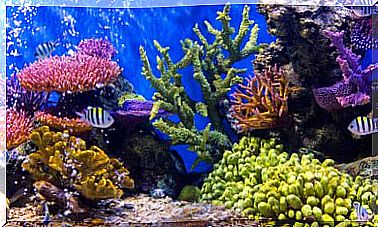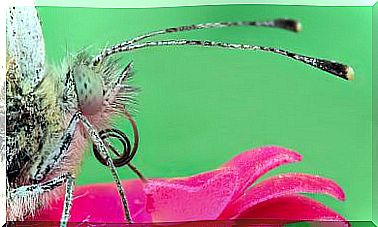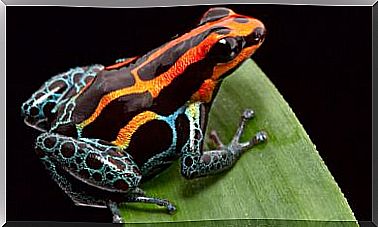Curiosities About Some Skin And Orthopedic Lesions In Animals
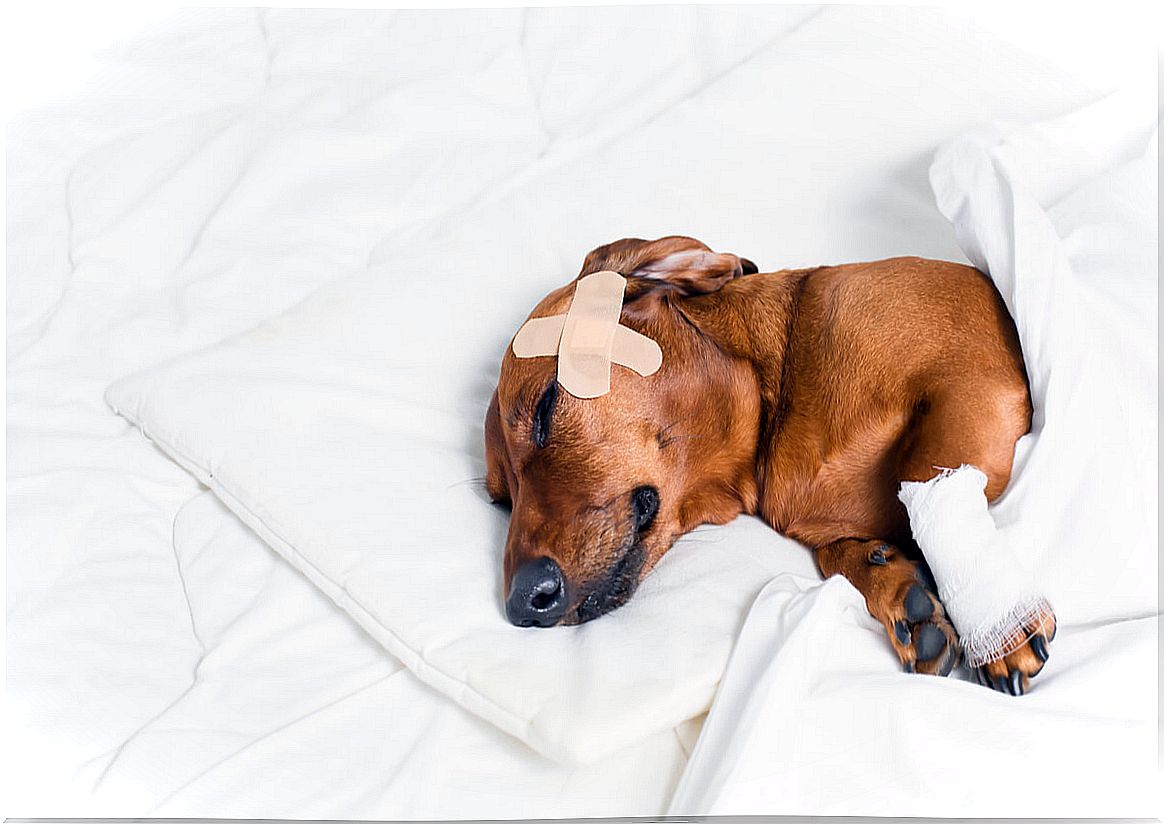
Rarely are skin and orthopedic injuries in animals accompanied by damage to vital organs. Because of this, they are often treated in the emergency room with low priority, or at least less promptly than those injuries that threaten the life of the patient.
Still, this does not mean that they are no longer important. Even the most superficial wound constitutes a route of entry to infections of all kinds, not to mention those serious injuries that compromise the circulatory system and can even trigger the death of the animal.
Curiosities about some skin and orthopedic injuries in animals: wounds
Wounds are injuries to the superficial tissues of the body. They are usually described as a “loss of continuity” of the skin due to physical or chemical trauma. In addition to the skin, underlying tissues are often affected, which must be paid attention to in order to determine their severity.
Injuries due to physical causes
They are the result of injury to tissues by physical force and are the most common type in the veterinary clinic. Punctures, lacerations, shearing or projectile impact can cause these types of injuries.
In general, the physical breakdown of the skin exposes deeper tissues, that is, it implies hemorrhages of a greater or lesser level. Therefore, the immediate goal of the veterinarian will be to control the bleeding and minimize the risk of infection.

Chemical injuries: burns and abrasions
Burns kill cells, thus destroying the integrity of damaged tissues. Although they are common in the human population, their appearance is relatively rare in veterinary practice.
Still, from time to time there are thermal, electrical, chemical, or radiation burns. In either of them, tissue destruction can continue even after removing the source of injury.
One of the most dangerous consequences of burns is that there can be such a loss of body fluid that it endangers the life of the animal. Furthermore, these lesions are highly vulnerable to infection, as was the case with open wounds.
Sometimes burns come from an unexpected source, such as ice. In winter, icy streets can cause abrasions to the skin of animals, with the same effect as a conventional burn. Some threats are even worse, like antifreeze.
In addition to causing quite a few problems derived from their accidental ingestion in pets, these chemicals can damage their skin or fur irreversibly.
Curiosities about some skin and orthopedic injuries in animals: musculoskeletal injuries
Although they are often impressive to look at, musculoskeletal injuries rarely take precedence in treating a patient with severe trauma. They always lag behind systemic lesions, which more frequently compromise the survival of the animal.
Even after evaluation of the major organs, musculoskeletal injuries cannot be considered in isolation. Sometimes bleeding and surrounding soft tissue damage can pose more problems than the injury itself.
Its approach requires, on many occasions, prolonged anesthesia to allow an accurate evaluation and corrective surgery. Consequently, most of the definitive treatment is outside the realm of urgent care.
Fractures and dislocations
Most fractures and dislocations are simple, acute, and are directly related to external trauma. Thus, symptoms include pain, deformity, inflammation, crackles, and locomotor instability.
Its systemic consequences can be severe by compromising general blood circulation. In this way, an injury that at first glance seemed to affect only the locomotor system ends up creating a problem for the whole organism.
Does animal saliva heal wounds?
It is common to find an animal with discomfort licking its wounds, as if that were to heal them. Is it an irrational instinct or does it really have an explanation?
The truth is that saliva contains different chemical substances —enzymes, mainly— that have great antibacterial and antifungal power. Some of them even have certain immune properties.
Obviously dogs are not aware of this, so they lick themselves simply because the injury bothers them. Their most primitive instinct dictates that with this action they may be helping to heal it.
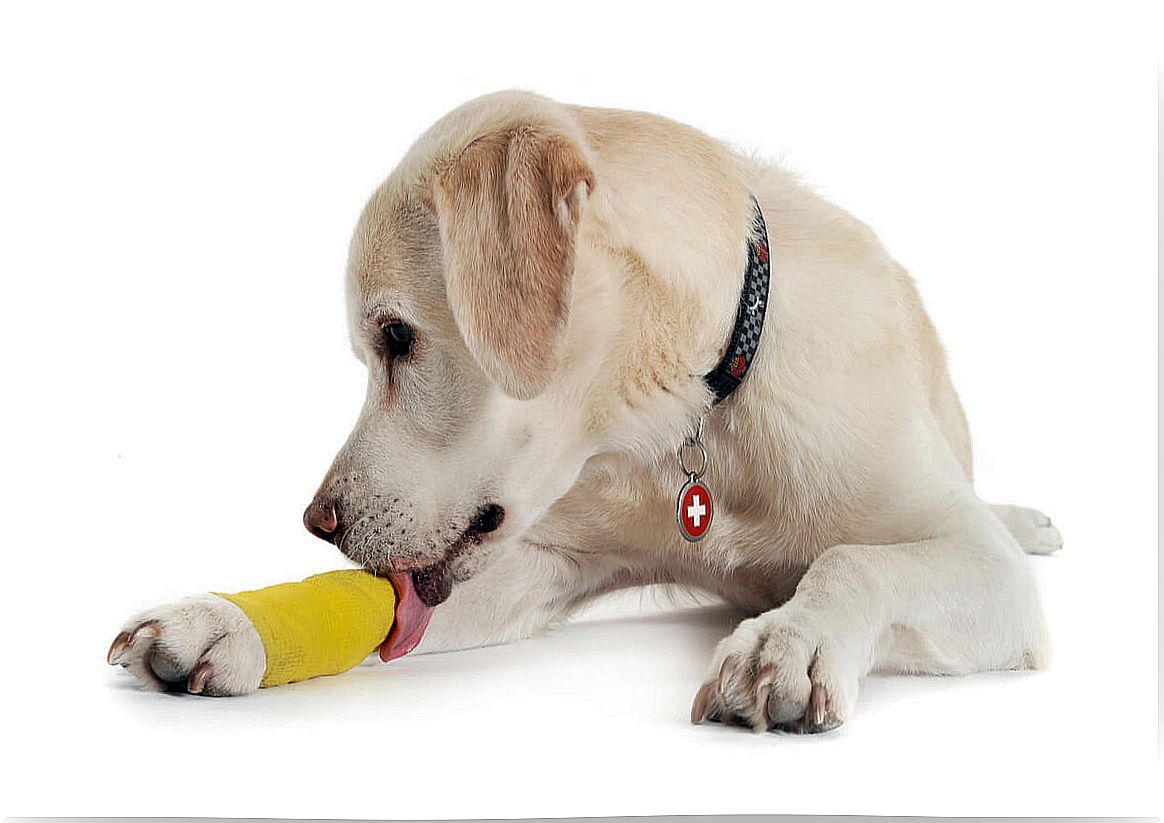
Unfortunately, this can also worsen the wound situation, since not everything we find in saliva is good, especially in an animal that has a tendency to put anything in its mouth. Saliva also contains bacteria that can easily contaminate a wound.
Therefore, it is essential to prevent pets from licking their wounds. In addition, it has been amply shown in both human and veterinary medicine that the best way to combat a wound is to allow it to dry out.
